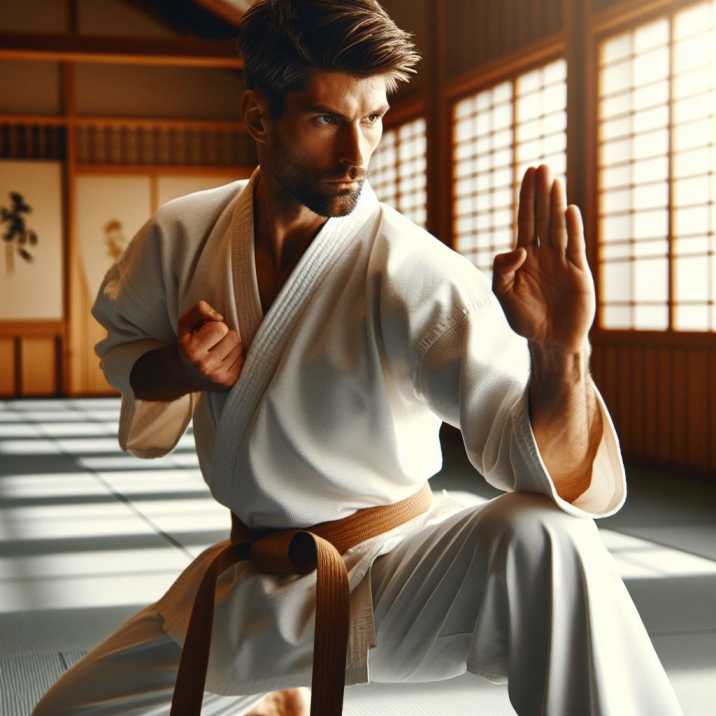Introduction:
Table of Contents
Karate, with its rich history and global appeal, often finds itself under the broad umbrella term of “martial arts.” However, upon closer inspection, it becomes evident that Karate defies such simplistic categorization. In this article, we embark on a journey to unravel the complexities surrounding the classification of Karate and understand why labeling, karate as a martial art is inaccurate.
Origins and Cultural Significance:
Karate as a Martial Art
Karate traces its roots back to the Ryukyu Kingdom (now Okinawa, Japan), where it evolved as a form of self-defense practiced by the indigenous people. Initially known as “Te” or “Tote,” Karate integrated influences from Chinese martial arts, indigenous Okinawan fighting techniques, and unique cultural philosophies. This fusion gave birth to a discipline deeply ingrained in the cultural fabric of Okinawa, emphasizing respect, discipline, and personal growth.

Philosophy and Principles:
The Soul of Karate
At its core, Karate transcends mere physical combat; it embodies a profound philosophy centered on self-improvement and spiritual growth. The fundamental principles of Karate, including humility, perseverance, and integrity, resonate with practitioners worldwide. Unlike the militaristic focus often associated with martial arts, Karate emphasizes harmony and peaceful resolution of conflicts, reflecting its roots in Okinawan culture.
Technical Distinctions:
Setting Karate Apart
While Karate shares certain technical elements with other martial arts, such as striking techniques and kata (forms), it also boasts distinct features that set it apart. One notable aspect is the emphasis on linear movements and powerful strikes, reflecting its pragmatic approach to self-defense. Additionally, Karate places a strong emphasis on kata, intricate choreographed patterns of movement that serve as repositories of traditional techniques and philosophies.
Competitive Aspects:
The Evolution of Karate in Sport
In recent decades, Karate has gained widespread popularity as a competitive sport, with formats such as Kumite (sparring) and Kata competitions. However, the competitive aspect of Karate represents only one facet of its practice and does not encapsulate its broader cultural and philosophical dimensions. While competitive Karate showcases practitioners’ skill and athleticism, it is essential to recognize that traditional Karate transcends mere sporting competition.
Modern Applications:
Karate in the Contemporary Context
In today’s world, Karate continues to evolve and adapt to changing societal landscapes. Beyond its traditional roots, Karate finds applications in various domains, including fitness, self-defense training, and even therapeutic practices. Organizations and schools worldwide offer Karate programs tailored to diverse audiences, emphasizing its versatility and relevance in contemporary society.
Conclusion:
In conclusion, labeling Karate as a martial art oversimplifies its rich history, cultural significance, and philosophical underpinnings. While Karate shares certain technical aspects with martial arts, its unique origins, principles, and applications distinguish it as a distinct discipline. By reframing the narrative surrounding Karate, we can appreciate its multifaceted nature and the profound impact it has on individuals and communities worldwide.
Information-Based Table:
| Aspect | Description |
|---|---|
| Origins | Traces back to the Ryukyu Kingdom, blending Chinese martial arts with indigenous Okinawan fighting techniques. |
| Philosophy | Emphasizes self-improvement, discipline, and peaceful conflict resolution. |
| Technical Distinctions | Linear movements, powerful strikes, and kata (forms) as repositories of traditional techniques and philosophies. |
| Competitive Aspects | Includes Kumite (sparring) and Kata competitions, showcasing practitioners’ skill and athleticism. |
| Modern Applications | Extends beyond traditional roots to fitness, self-defense training, and therapeutic practices in contemporary society. |
FAQs:
- Is Karate a martial art? No, Karate is not accurately categorized as a martial art due to its distinct cultural origins, philosophical principles, and technical distinctions.
- What sets Karate apart from other martial arts? Karate’s emphasis on linear movements, powerful strikes, and kata distinguishes it from other martial arts, reflecting its unique heritage and cultural influences.
- Can Karate be practiced for self-defense? Yes, Karate is an effective system of self-defense that equips practitioners with practical techniques for protecting themselves in real-life situations.
- Is competitive Karate the same as traditional Karate? Competitive Karate represents only one aspect of traditional Karate practice and does not encompass its broader cultural and philosophical dimensions.
- How can one get started with learning Karate? To begin learning Karate, individuals can seek out reputable martial arts schools or dojos that offer Karate classes taught by experienced instructors. It’s essential to approach learning Karate with dedication, respect, and an open mind.


